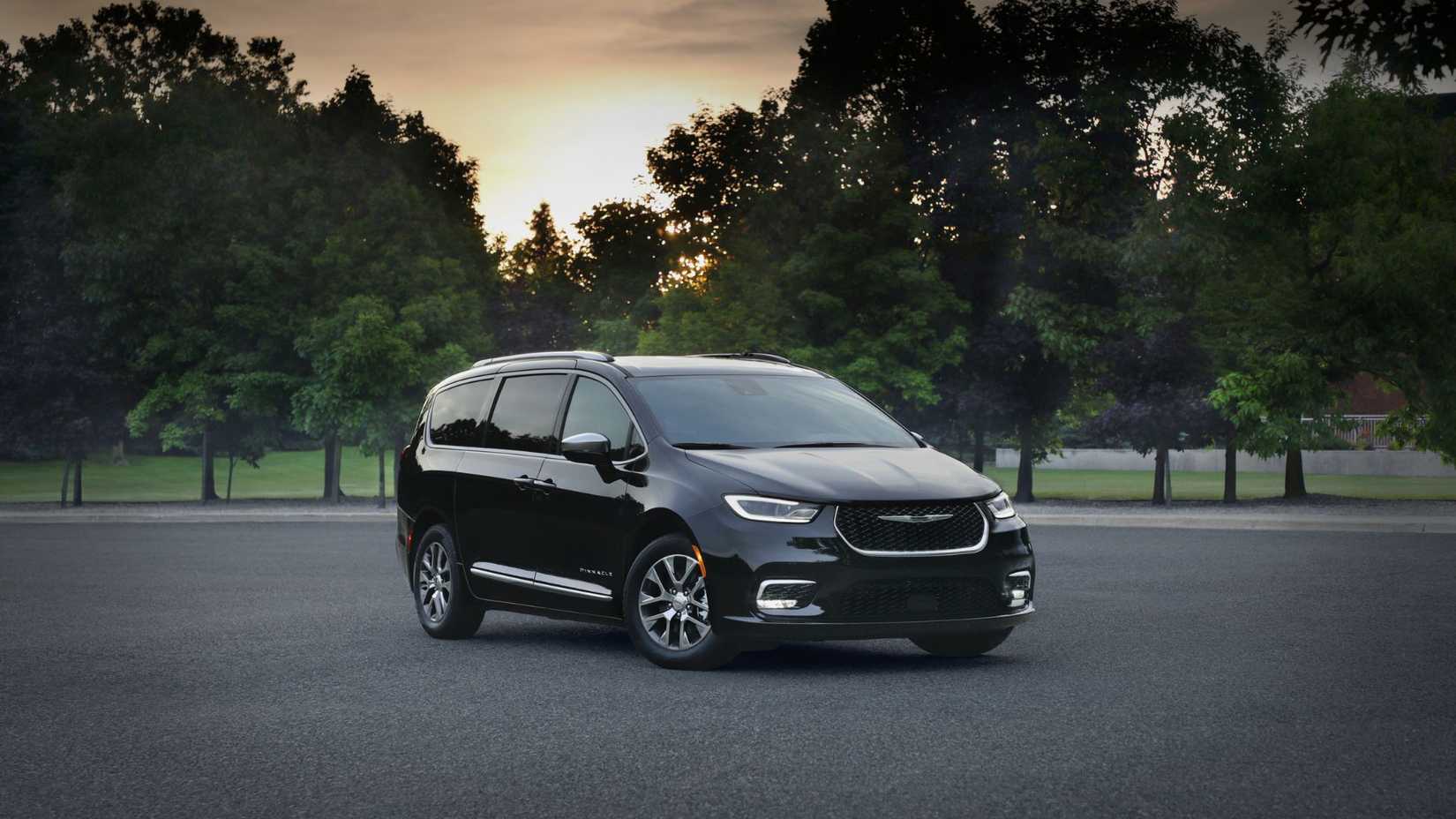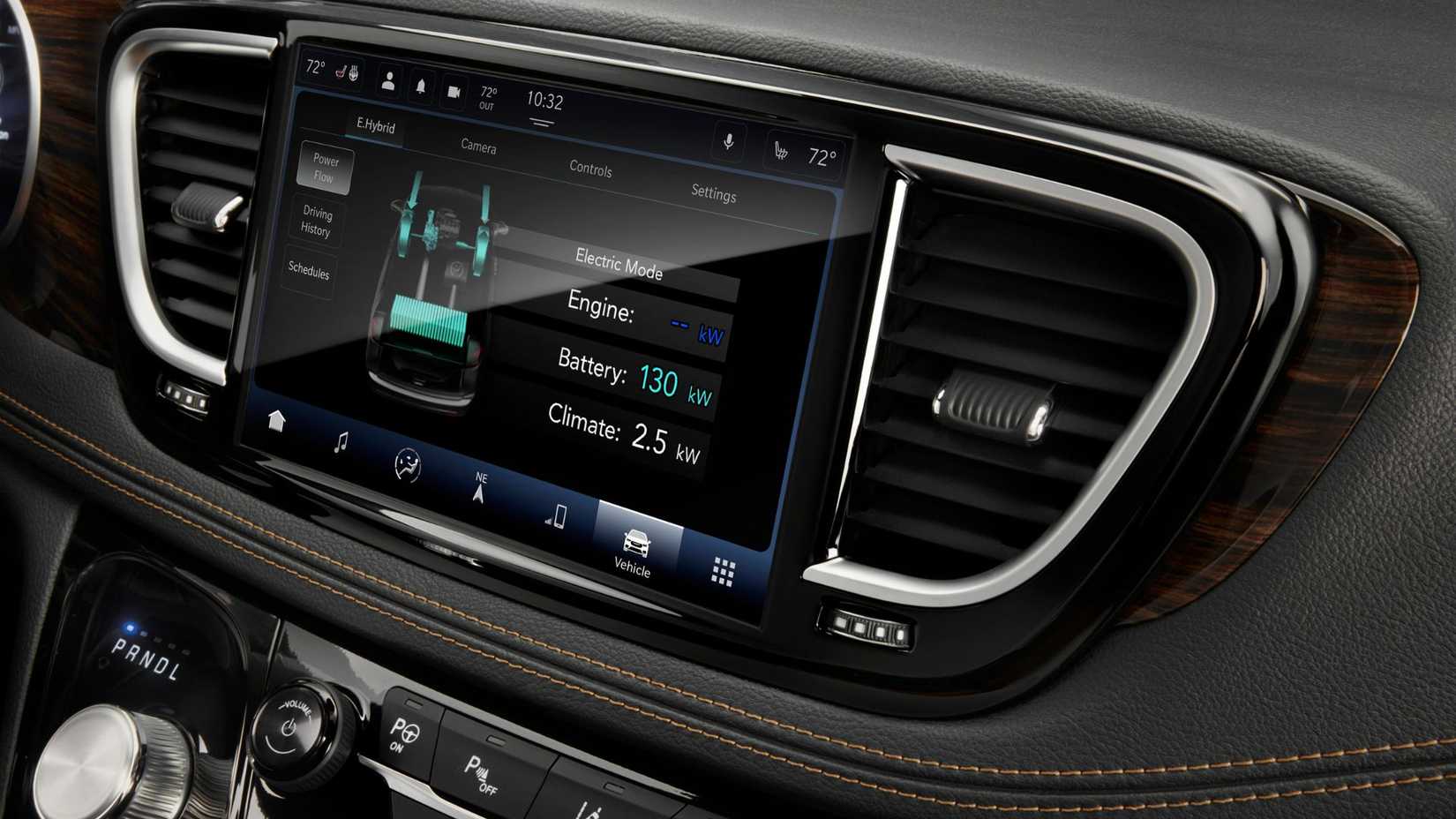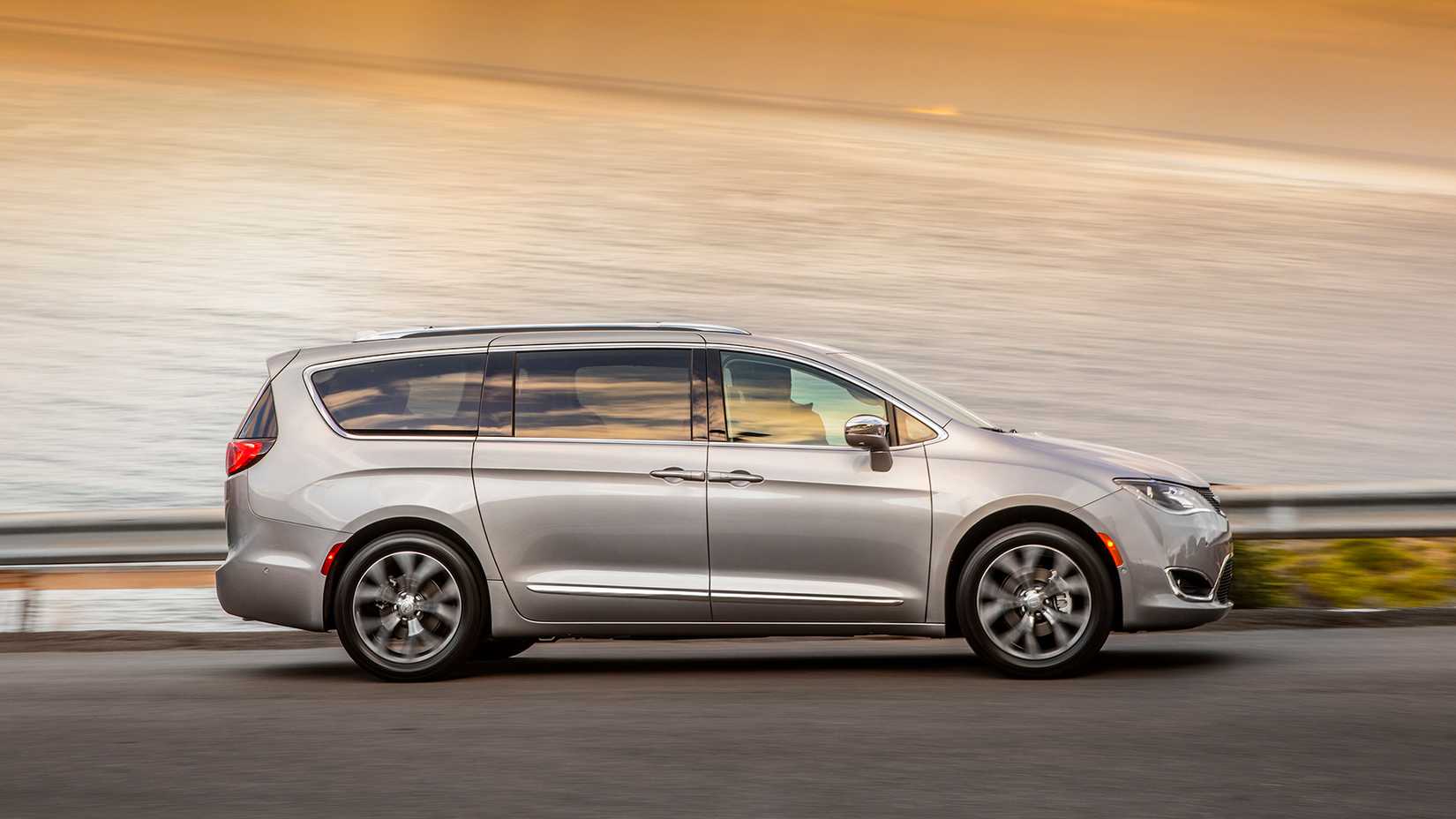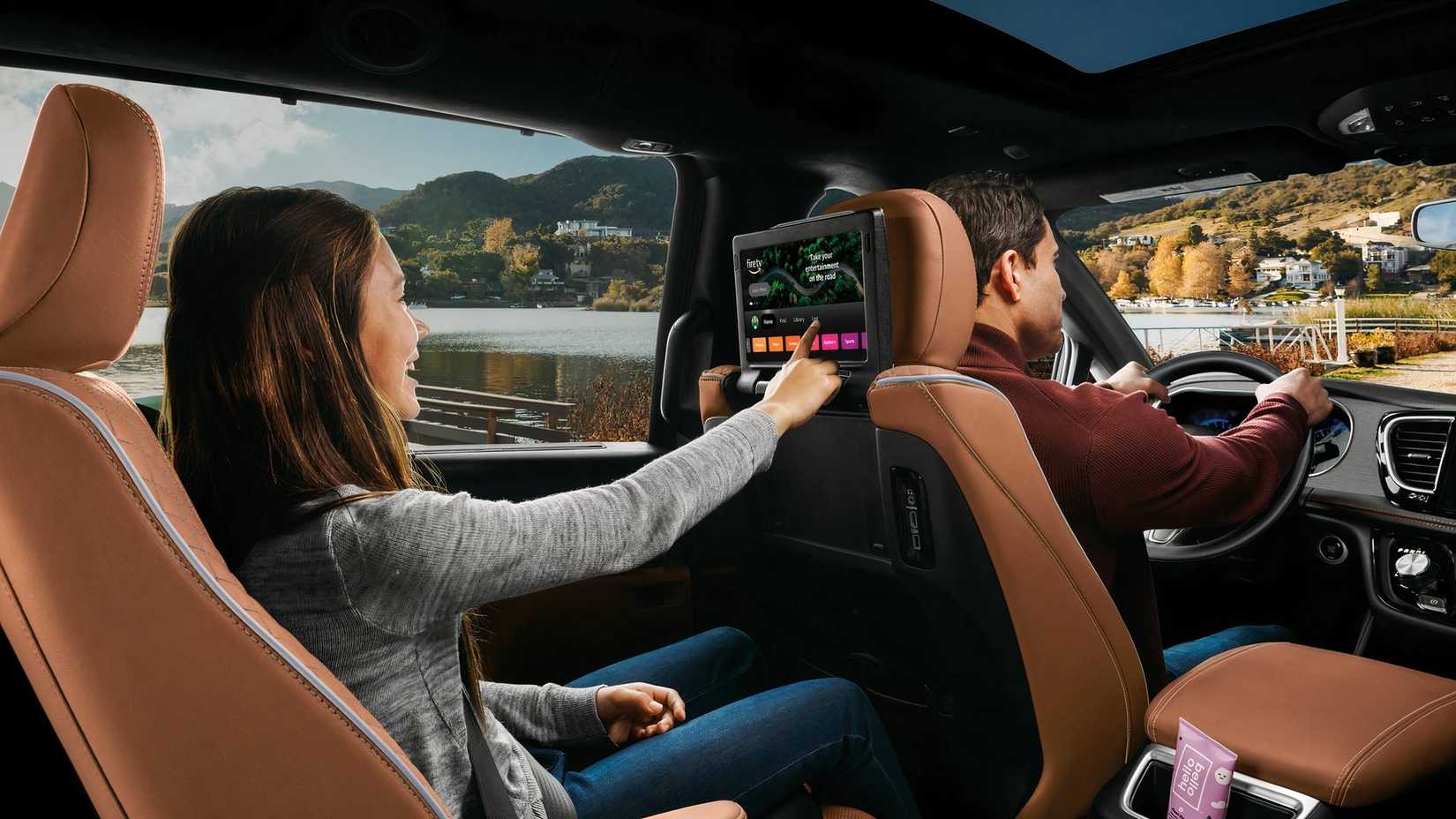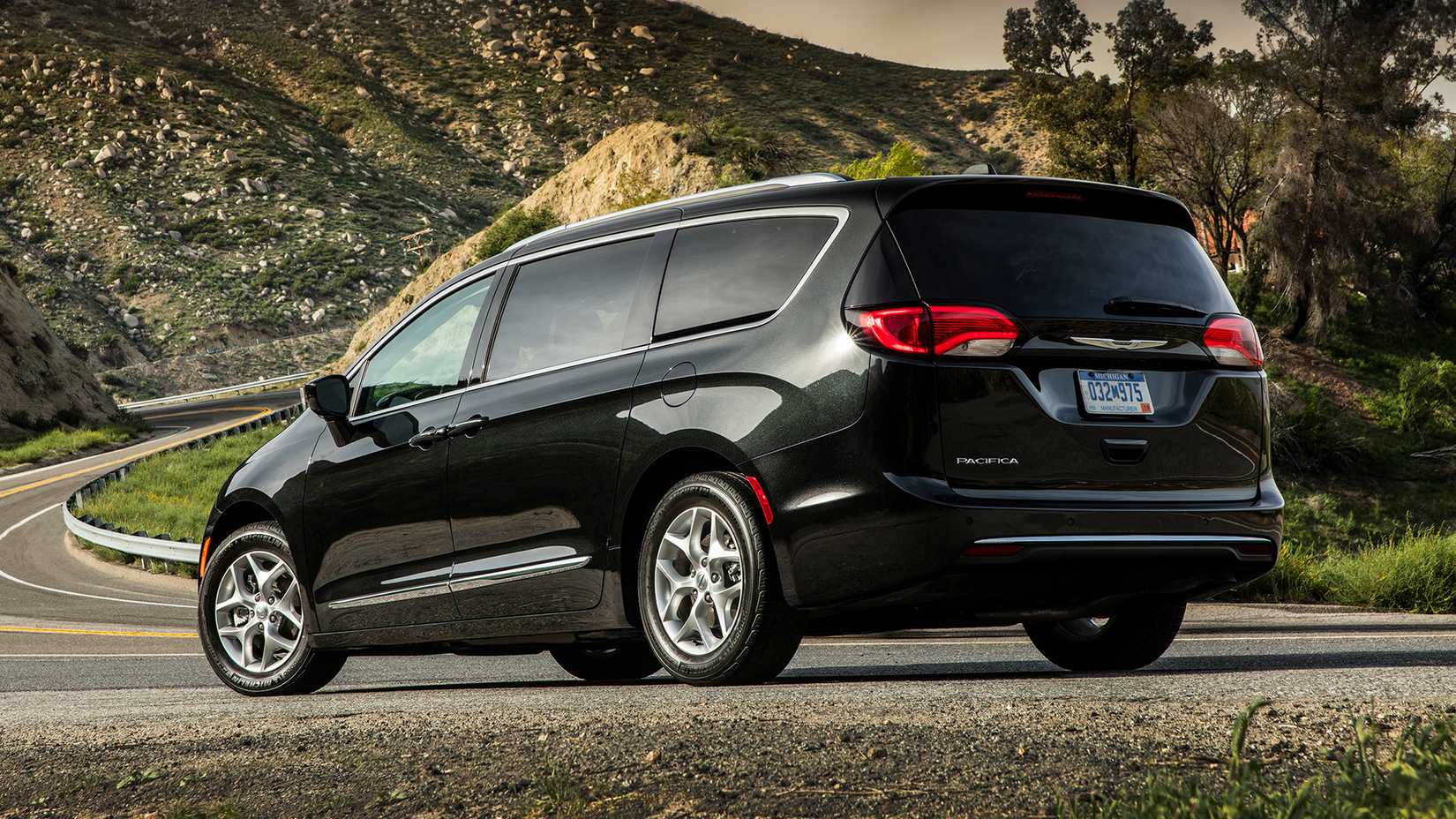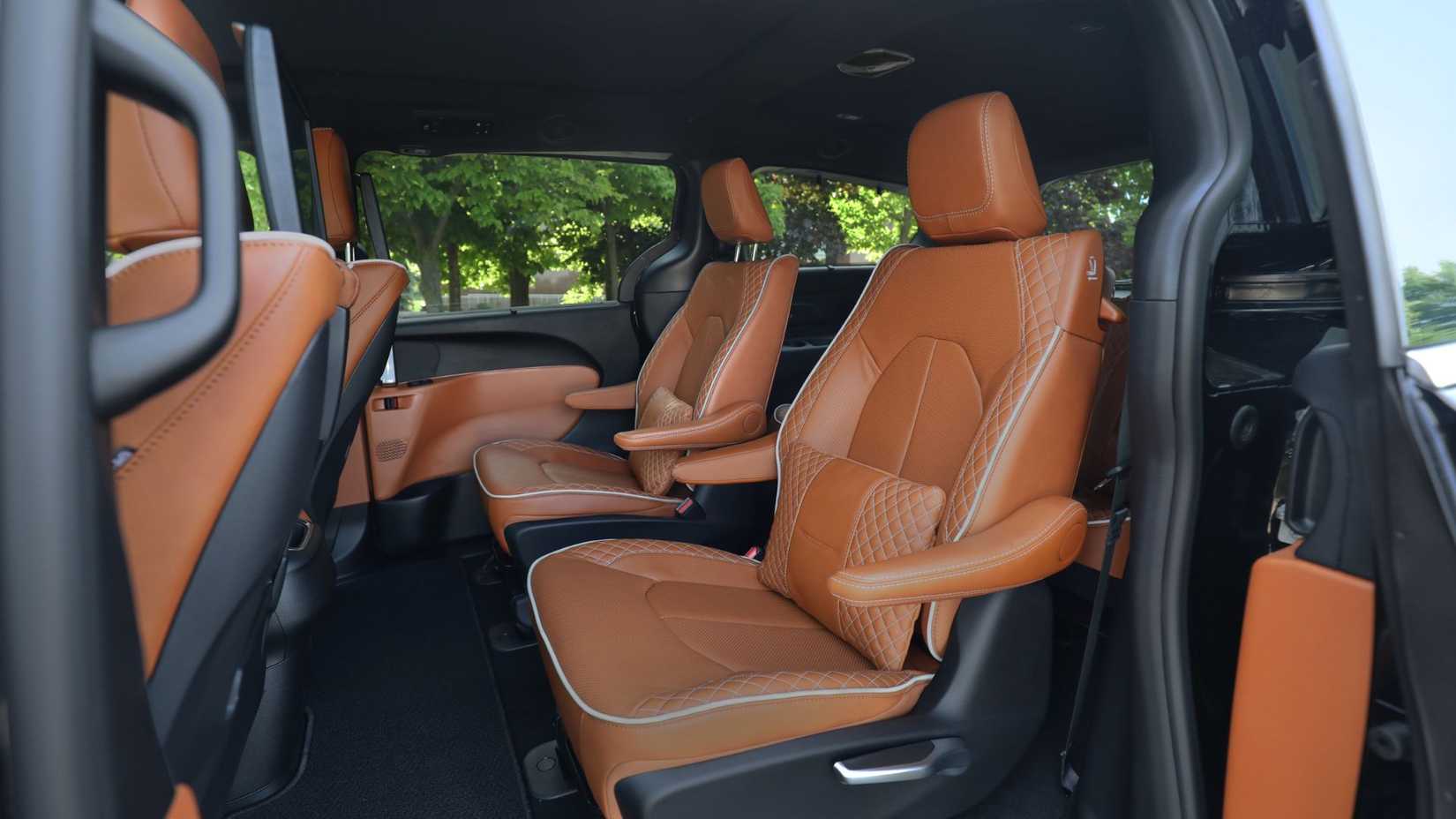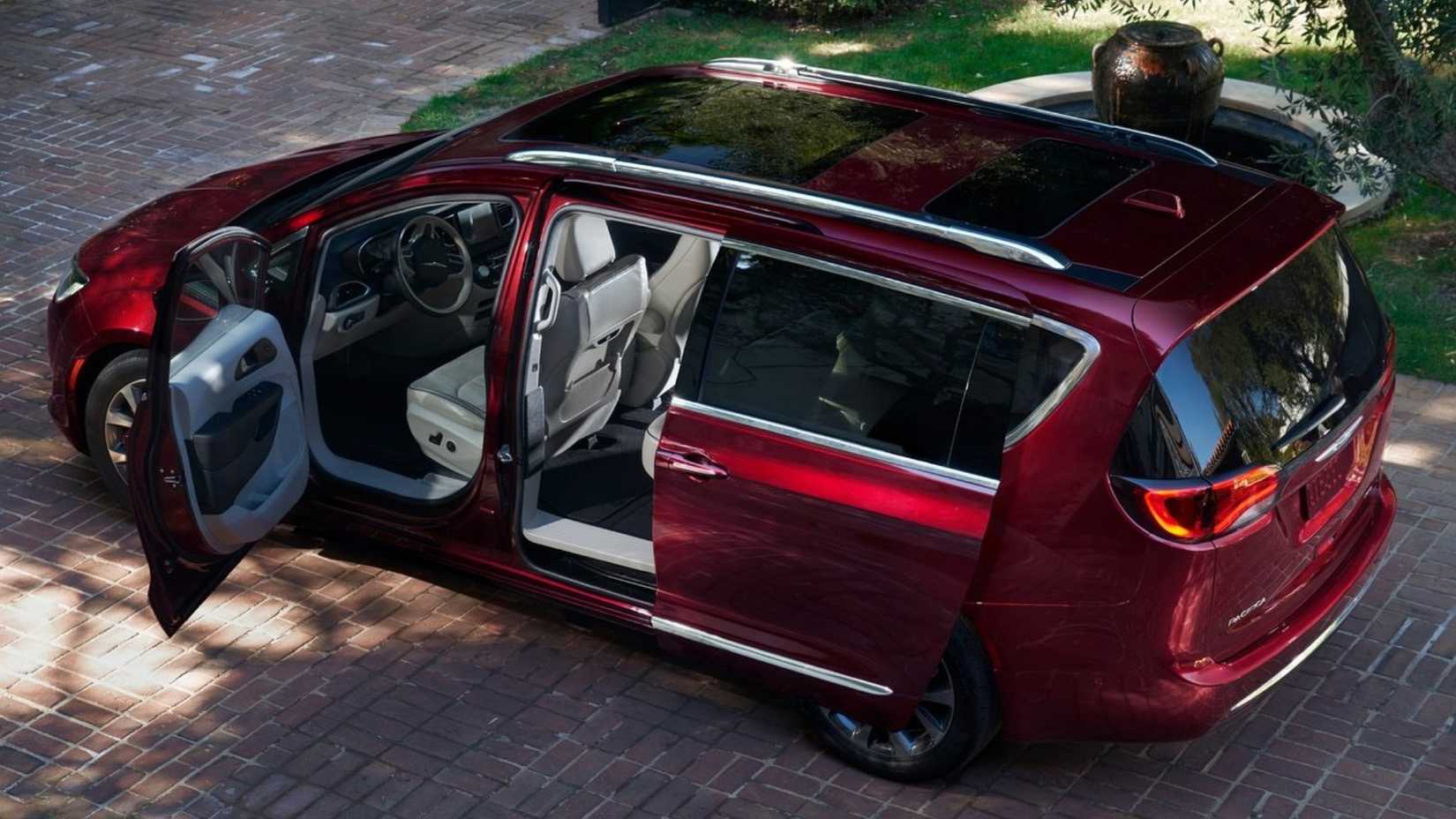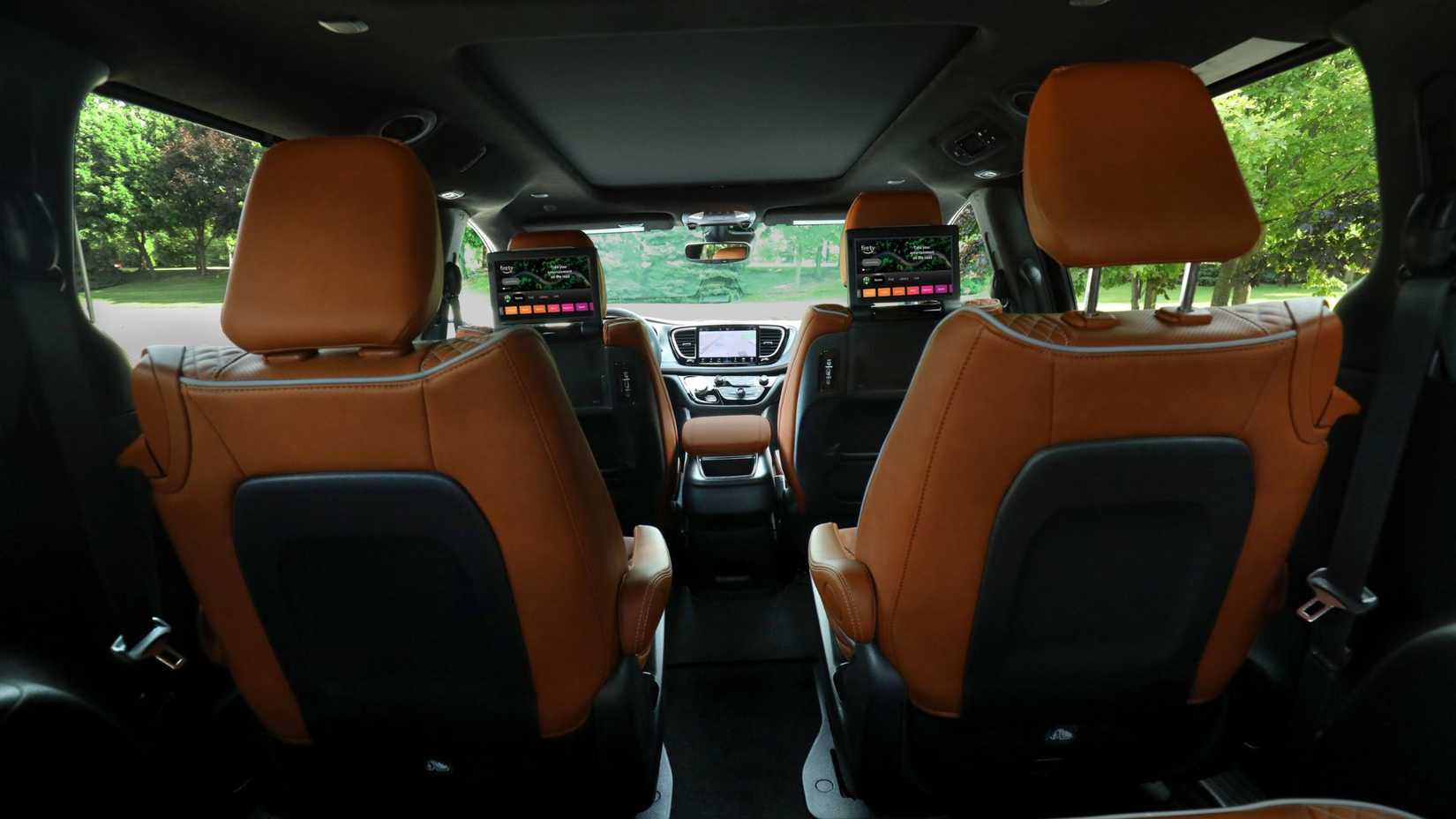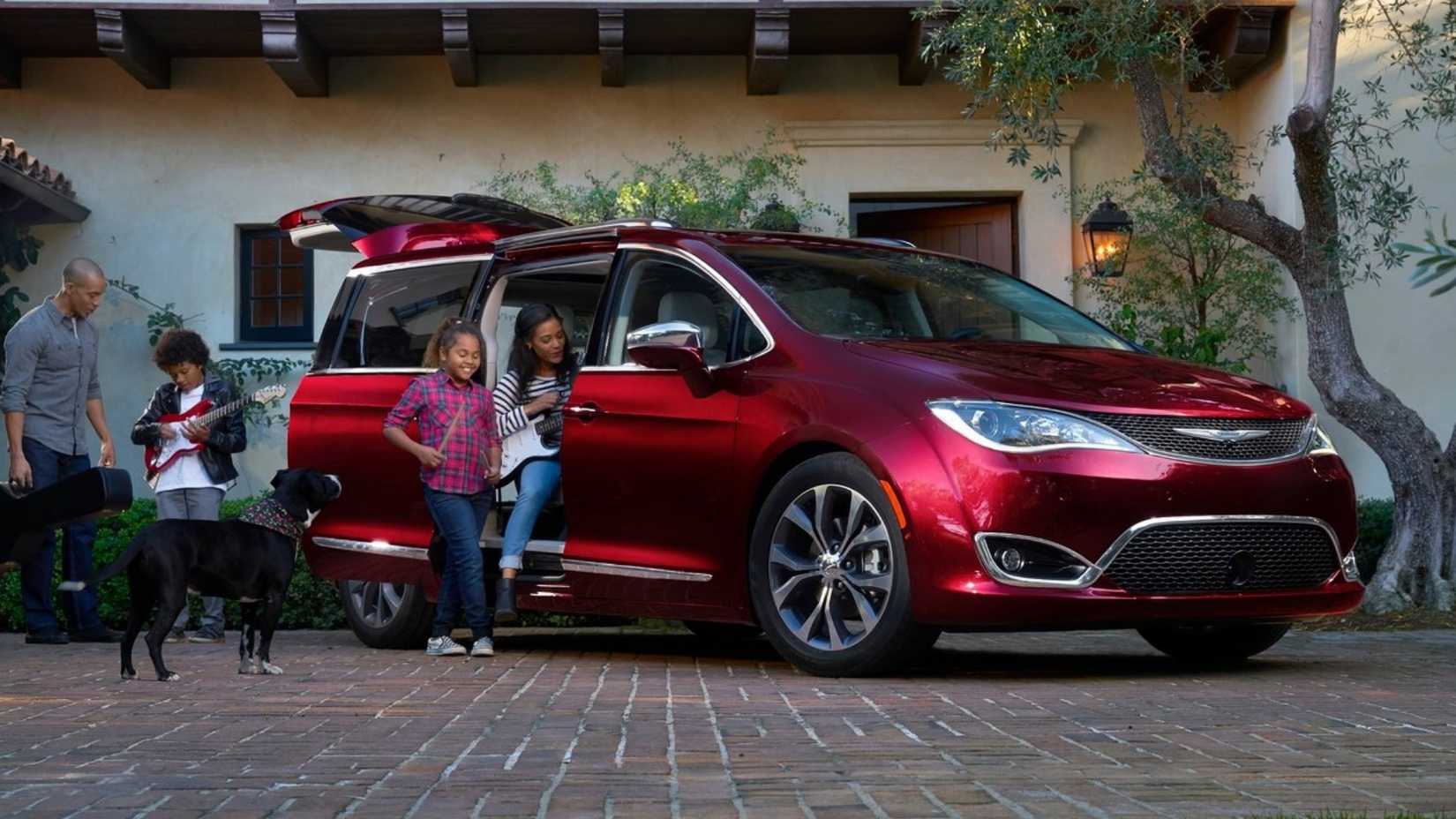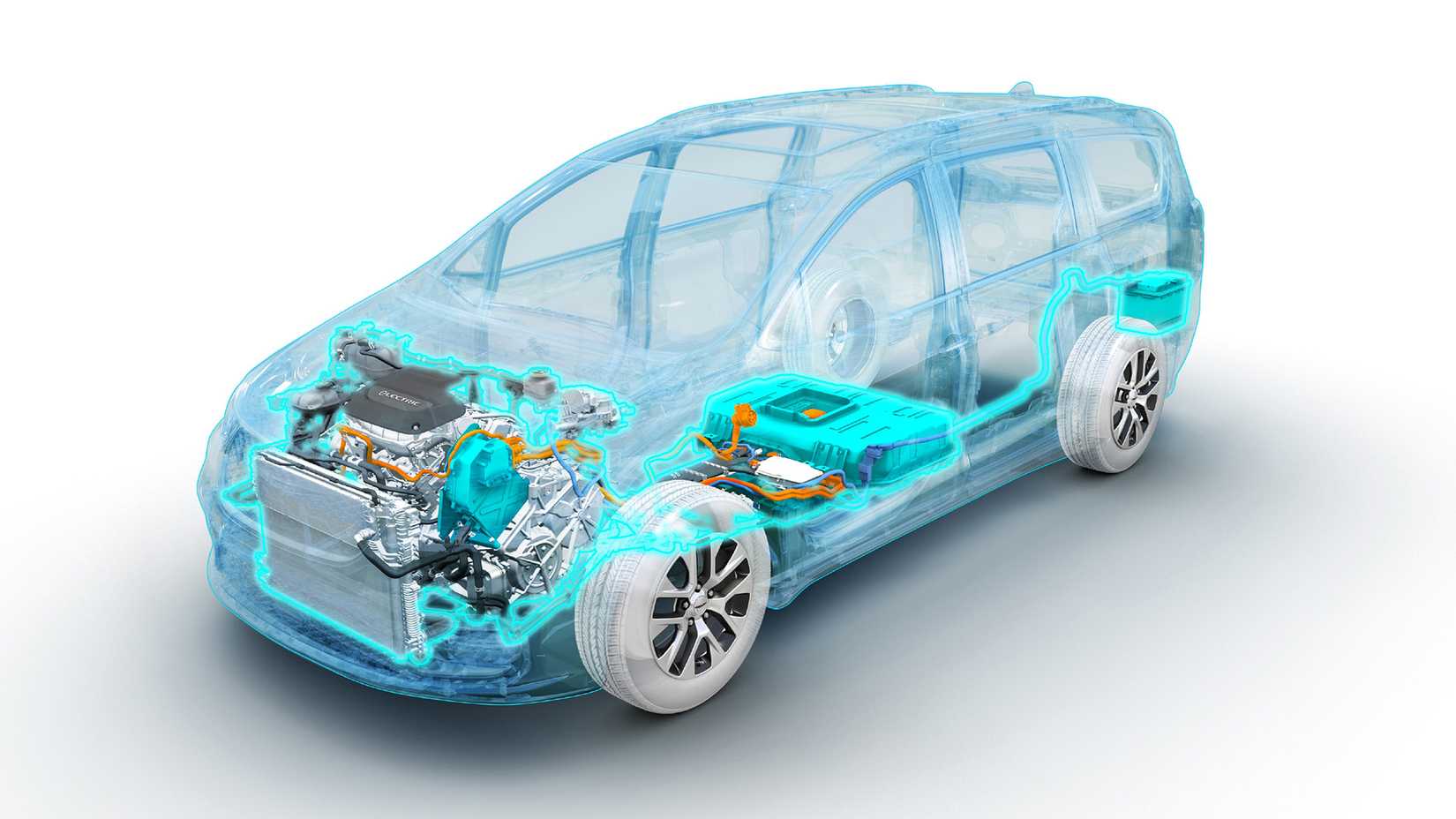
For used family hauler shoppers looking to absolutely max out cargo space and fuel efficiency for the dollar, there’s just one vehicle body style that should top your list, and it’s not the SUV. Some drivers like minivans, others don’t. The SUV has become a popular alternative in recent decades, though the modern hybrid minivan smokes today’s modern SUV when it comes to flexibility and space.
Fuel efficiency, too – especially when considering a Chrysler Pacifica PHEV. This plug-in hybrid minivan was the first of its kind, marked the first electrification of the Pentastar V6 engine, and stacks up in the used market today as just about the roomiest family-hauler hybrid you can buy for $15,000 or less.
Best of all, it’s likely to have a much lower annual fuel cost and much more room than a comparably large SUV, which you’ll probably pay a lot more money for. Of course, there are pros and cons to consider, and we’ll dive into those, as well as some important math, below.
The First PHEV Minivan Was The First Pentastar Hybrid
The Pacifica first arrived for the 2017 model year to replace the former Chrysler Town and Country. This was the market’s first plug-in hybrid minivan, landing in the midst of major federal rebates in both Canada and the USA that made its purchase a virtual no-brainer compared to the more mainstream gas-only versions.
The Pacifica Hybrid used a modified version of the already well-established 3.6-liter Pentastar V6 engine with added hybrid hardware that enabled at-home charging, 33 miles of all-electric range in ideal conditions, and a smooth and refined drive. The Pacifica’s platform was re-engineered from the ground up for improvements to noise levels, ride quality, and handling.
That 33-mile all-electric range is an important figure. At the Pacifica Hybrid’s launch, Chrysler said that most minivan drivers average 30 miles per day. For many drivers, this meant that daily errands and commuting could be handled with virtually no gasoline use. Once the stored charge in the battery runs down, the gas engine automatically activates in gas-electric hybrid mode to carry on the drive with no interruptions. Plugging in this type of hybrid is never mandatory, and drivers only plug in when it’s convenient to do so.
Should You Buy An SUV Instead?
Maybe. Though a minivan is a smart choice to maximize space and minimize fuel use for your used family hauler dollars, the Pacifica Hybrid does have a few drawbacks. First, it’s not ideal for families running a single vehicle who need to pull a trailer, since towing is not recommended for the Pacifica Hybrid. Second, though other Pacifica variations have AWD available, the hybrid version comes only with front-wheel drive. For some drivers in extreme climates, that could be a dealbreaker.
Third, the SUV is likely a better choice if you’ll frequently travel on rough roads, light trails, or venture even deeper into the wilderness. Some shoppers prefer an SUV for their more truck-like ride height and ground clearance, though the clearance and height of a minivan is much more car-like. If none of these sound like a major concern to you, read on for a look at how this spacious hybrid minivan stacks up to two of its popular SUV cousins.
Here’s The Math You Need To See
Let’s start with engines and performance. Below, we’re comparing the Pacifica Hybrid to two other popular three-row family movers, the Jeep Wagoneer and Dodge Durango, which as of the 2026 model year, packs 475 horsepower for less than $50,000.
As you check out the table below, note the towing capacity of each model, as well as the annual fuel cost. The Pacifica Hybrid is the least-powerful machine on your page, the only one not available with AWD, and the only one without any towing capacity. On the plus side, it costs about half as many of your dollars to drive every year as the two SUV models.
|
Chrysler Pacifica Hybrid VS Jeep Wagoneer vs Dodge Durango |
|||
|---|---|---|---|
|
|
2025 Chrysler Pacifica Hybrid |
2025 Jeep Wagoneer 2WD |
2025 Dodge Durango |
|
Engine |
3.6-liter V6 gas hybrid |
3.0-liter inline six-cylinder gas twin turbo |
3.6-liter V6 gas NA |
|
Power (net combined) |
260 hp |
420 hp |
295 hp |
|
Torque |
NA |
468 lb-ft |
260 lb-ft |
|
Transmission |
Electrically Variable Transmission |
8-speed automatic |
8-speed automatic |
|
Drivetrain |
FWD |
RWD |
RWD |
|
Towing Capacity |
Not recommended |
6,120 lbs |
6,200 lbs (with V6 engine) |
|
EPA annual fuel cost (approx) |
$1,200 (electricity and fuel) |
$2,350 |
$2,350 |
Next, let’s look at size and measurements. The Pacifica is generally a little bigger than the Dodge Durango, with less than two inches between their wheelbases and less than four inches between their overall lengths. The Wagoneer is more than 10 inches longer and three inches wider than the Pacifica Hybrid, though just 1.4 inches separates the two on wheelbase. Take note of the Wagoneer’s massive advantage in overall height, too.
|
Chrysler Pacifica Hybrid vs Jeep Wagoneer vs Dodge Durango |
|||
|---|---|---|---|
|
2025 Chrysler Pacifica Hybrid |
2025 Jeep Wagoneer |
2025 Dodge Durango |
|
|
Length |
204.3 inches |
214.7 inches |
200.8 inches |
|
Width With Mirrors |
90.4 inches |
94.0 inches |
85.5 inches |
|
Height |
69.9 inches |
75.6 inches |
72.1 inches |
|
Wheelbase |
121.6 inches |
123.0 inches |
119.8 inches |
|
Cargo (All Seats In Use) |
32.3 cu-ft |
27.4 cu-ft |
17.2 cu-ft |
|
Cargo (All Seats Folded) |
140.5 cu-ft |
116.7 cu-ft |
85.1 cu-ft |
The cargo space measures tell a major part of this story. Despite being larger in all major dimensions than the Pacifica Hybrid, the Jeep Wagoneer trails in both minimum and maximum cargo capacity measures by at least 15 percent. The Durango – also with three seating rows – trails the Pacifica Hybrid in both minimum and maximum cargo capacity by at least 39%. There’s more to the story when considering passenger accommodations, too.
|
Vehicle Interior Dimensions |
|||
|---|---|---|---|
|
Chrysler Pacifica |
Jeep Wagoneer |
Dodge Durango |
|
|
1st Row Headroom |
40.1 in |
41.3 in |
39.9 in |
|
1st Row Legroom |
41.1 in |
40.9 in |
40.3 in |
|
1st Row Shoulder Room |
63.8 in |
66.1 in |
58.5 in |
|
1st Row Hip room |
59.0 in |
63.4 in |
57.0 in |
|
2nd Row Headroom |
39.6 in |
40.0 in |
39.8 in |
|
2nd Row Legroom |
39.0 in |
42.7 in |
38.6 in |
|
2nd Row Shoulder Room |
63.0 in |
65.2 in |
57.7 in |
|
2nd Row Hip room |
64.8 in |
63.0 in |
55.5 in |
|
3rd Row Headroom |
38.7 in |
39.0 in |
37.8 in |
|
3rd Row Legroom |
36.5 in |
36.6 in |
33.5 in |
|
3rd Row Shoulder Room |
61.2 in |
64.4 in |
50.4 in |
|
3rd Row Hip room |
49.5 in |
51.6 in |
42.4 in |
The Pacifica takes top position among this trio for first row legroom and second row hip room, with the Jeep Wagoneer earning the most spacious dimensions for all remaining categories, typically by a relatively small margin.
The Durango beats the Pacifica Hybrid slightly on second-row headroom, though the Pacifica Hybrid handily offers more space than the Durango in all other measures, especially when it comes to hip and shoulder room measurements. Remember, the Pacifica Hybrid is about five inches wider than the Durango, which helps explain the results.
To sum up the above, the Pacifica Hybrid has more cargo volume than either machine on your page by a significant margin and offers its third-row passengers headroom and legroom that land within a third of an inch of the enormous Wagoneer – all while using half your fuel dollars.
What You’ll Pay For A Used Pacifica PHEV Today
Though the Kia Carnival Hybrid delivers slightly more cargo space than the Pacifica Hybrid, you’re not likely to find many on the used market today, since it only launched last year. Conversely, the used market has plenty of selection on Pacifica Hybrid models at a variety of mileage and price points, since it’s been on the road for nine years.
If you’ve got a budget around $35,000, you can snag a copy of what’s likely the second most spacious hybrid on the road today with an odometer reading of 6,000 miles or less. For around $13,000 to $15,000, look for second-hand units around the 100,000-mile mark.
Sources: Autotempest, EPA

